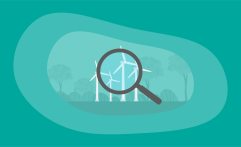10 Best Carbon Offsets for Gifts (Complete 2024 List)
Impactful Ninja is reader-supported. When you buy through links on our site, we may earn an affiliate commission.
Learn more
Learn more
.
Hey fellow impactful ninja ? You may have noticed that Impactful Ninja is all about providing helpful information to make a positive impact on the world and society. And that we love to link back to where we found all the information for each of our posts. Most of these links are informational-based for you to check out their primary sources with one click. But some of these links are so-called "affiliate links" to products that we recommend. First and foremost, because we believe that they add value to you. For example, when we wrote a post about the environmental impact of long showers, we came across an EPA recommendation to use WaterSense showerheads. So we linked to where you can find them. Or, for many of our posts, we also link to our favorite books on that topic so that you can get a much more holistic overview than one single blog post could provide. And when there is an affiliate program for these products, we sign up for it. For example, as Amazon Associates, we earn from qualifying purchases. First, and most importantly, we still only recommend products that we believe add value for you. When you buy something through one of our affiliate links, we may earn a small commission - but at no additional costs to you. And when you buy something through a link that is not an affiliate link, we won’t receive any commission but we’ll still be happy to have helped you. When we find products that we believe add value to you and the seller has an affiliate program, we sign up for it. When you buy something through one of our affiliate links, we may earn a small commission (at no extra costs to you). And at this point in time, all money is reinvested in sharing the most helpful content with you. This includes all operating costs for running this site and the content creation itself. You may have noticed by the way Impactful Ninja is operated that money is not the driving factor behind it. It is a passion project of mine and I love to share helpful information with you to make a positive impact on the world and society. However, it's a project in that I invest a lot of time and also quite some money. Eventually, my dream is to one day turn this passion project into my full-time job and provide even more helpful information. But that's still a long time to go. Stay impactful,Affiliate Disclosure
Why do we add these product links?
What do these affiliate links mean for you?
What do these affiliate links mean for us?
What does this mean for me personally?
![]()
Carbon offsets are beneficial for our environment because they allow us to reduce carbon dioxide (CO2) emissions in areas where reduction would otherwise be impossible. But did you know that you can gift carbon offsets to other people? Giving the gift of climate change mitigation could help us create a sustainable planet for future generations. So, we had to ask: What are the best carbon offsets for gifts?
The best carbon offsets for gifts in terms of overall impact are Terrapass, GoClimate, Wren, Climate Hero, and Thanks a Ton. Climeworks is the most expensive but also most effective carbon offset gift option.
Keep reading to learn more about the best carbon offsets for gifts, how these carbon offset projects work, what their respective offsetting costs are, and what your best way would be to offset your carbon emissions. At the end of the article, we’ll also share with you what the biggest carbon offsetting limitations are and why reducing your carbon footprint is more effective than offsetting it.
Here’s What All the Best Carbon Offsets for Gifts Have in Common
Carbon offsets are reductions in carbon emissions that are used to compensate for carbon emissions occurring elsewhere. They are measured in tons of CO2 equivalents and are bought and sold through international brokers, online retailers, and trading platforms on what is known as the global carbon offset market.
“Carbon Offset: a way for a company or person to reduce the level of carbon dioxide for which they are responsible by paying money to a company that works to reduce the total amount produced in the world, for example by planting trees”
Oxford Dictionary
When you purchase carbon offsets for gifts, it’s important that they actually make a difference in total carbon emissions. To achieve that, the following are key criteria:
- Carbon offset projects have to be effective (different projects have different effectiveness rates)
- Carbon offset projects have to be additional
- Carbon offset projects have to be permanent
- The claims from carbon offset projects have to be verifiable
(For a full overview, check out our guide on how to choose carbon offset projects that actually make a difference.)
These Are the Best Carbon Offsets for Gifts in 2024
Below are our favorite carbon offsets for gifts (you can click on their link to directly jump to their section in this article):
| Carbon Offsets for Gifts | Quick Facts |
| Climeworks | About: 3 carbon offset gift options where purchases support the practice of direct CO2 removal, where specialized machines remove CO2 directly from the air and store it in rock formations underground Costs: $1,200 per 1,000kg of CO2 |
| Terrapass | About: 2 carbon offset gift options where purchases support farm power, landfill gas capture, clean energy from wind power, and abandoned coal mine methane capture carbon offset projects Costs: $17.63 per 1,000kg of CO2 |
| GoClimate | About: 4 carbon offset gift card options where purchases support a water filter project in Indonesia, a geothermal energy project in Sumatra, and a landfill gas recovery project in Colombia Costs: $16.99 per 1,000kg of CO2 |
| Thanks a Ton | About: Various, digital greeting card options where purchases support carbon removal projects including bio-oil, biochar, concrete mineralization, enhanced rock weathering, seaweed sinking, soils, and direct air capture. Costs: $25 to $1,150 per 1,000kg of CO2 removed |
| Offset Alliance | About: 2 carbon offset gift options where purchases support the Trees for Bees and Coastal Mangroves projects. Either native trees or mangroves are planted to provide food, shelter, migration paths, and nursery habitat for various species. Costs: $16.70 to $34.48 per 1,000kg of CO2 |
| Carbonfund | About: 2 carbon offset gift options where purchases support energy efficiency, forestry, and renewable energy carbon offset projects globally Costs: $16.25 per 1,000kg of CO2 |
| Zero Smart | About: 1 carbon offset gift option where purchases support mangrove planting, efficient cookstoves, hydropower, reforestation, methane capture, and landfill gas recovery projects Costs: $5.97 per 1,000kg of CO2 |
| Wren | About: 4 carbon offset gift options where purchases support biochar, tree planting, mineral weathering, clean cookstoves, and tech-enabled Amazon Rainforest protection projects Costs: $19.80 per 1,000kg of CO2 |
| Climate Hero | About: 4 carbon offset gift options where purchases support wind energy, solar water heating, geothermal energy, wind energy, and methane digester projects Costs: $13.23 per 1,000kg of CO2 |
| Selectra | About: 4 carbon offset gift card options where purchases support wind farm development in India via the Ghandi project Costs: $11.01 per 1,000kg of CO2 |
Climeworks: The Leader in Direct CO2 Removal
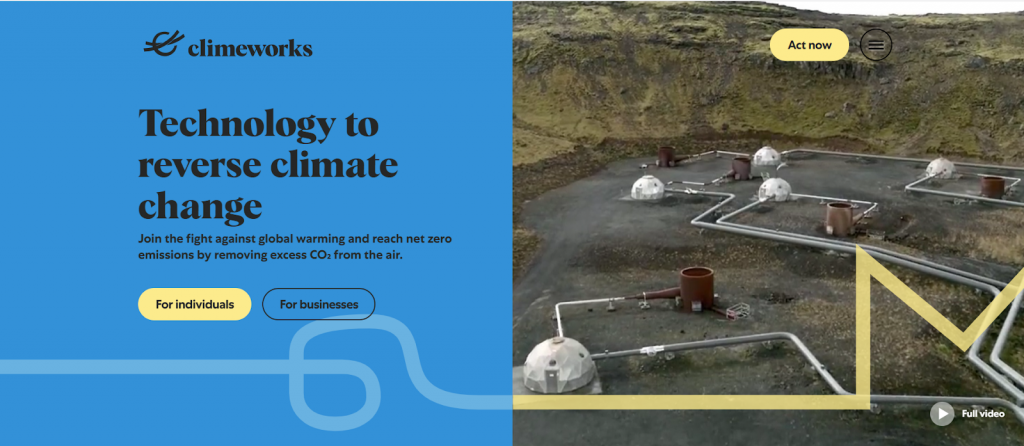
Climeworks, a DAC company in Zurich, Switzerland, is the leader in the CO2 removal game. It was founded in 2009 by engineering university students Jan and Christoph, who were shocked at the melting glaciers in the Swiss Alps. Climeworks’ mission is to inspire one billion people to remove CO2 from the air and reverse climate change.
“Let’s reverse climate change”
Climeworks
Project overview: The Climeworks specialized machines take CO2 from the air, mix it with water, and pump it deep underground. Through the process of natural mineralization, the captured CO2 is turned to stone. Since their inception in 2017, Climeworks has built 15 DAC machines and switched on the world’s first large-scale plant back in 2021.
Carbon offset effectiveness: Climeworks offsets are permanent, measurable, natural, and efficient. For every 100 tons of CO2 captured from the air, 90 tons are permanently removed, and only up to 10 tons are re-emitted by the DAC machines.
Carbon offset costs: Climeworks offers 3 eco-friendly gift options which remove either 25, 45, or 85 kg (0.03, 0.05, or 0.09 tons) of CO2 at a cost of $1.20 per 1kg of CO2 removed.
How to get your carbon offsets: Climeworks offers three standard eco-friendly gift options and also provides a “custom gift” option to choose a different monetary amount.
Terrapass: The Gift of Carbon Offsets for a Greener World
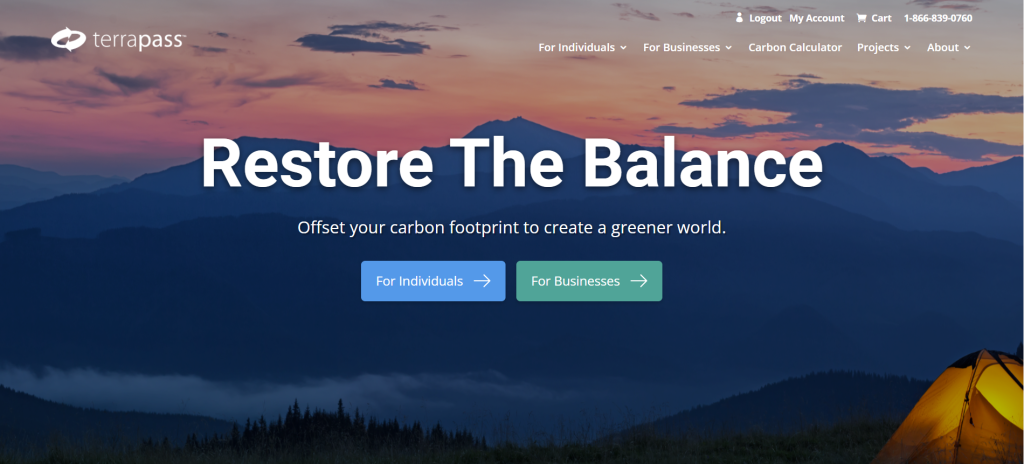
Terrapass is an organization that has been providing carbon offsets to individuals and businesses since 2004. In 2020, Terrapass customers offset roughly the same amount of carbon as planting 7 million trees. Their mission is to fight climate change by reducing as many carbon emissions as possible via the use of education, online tools, carbon offsets, and renewable energy.
“Restore the balance”
Terrapass
Carbon offset overview: Terrapass offers a standard gift option that can be purchased in increments of 1,000lbs (453kg). Purchases help fund carbon offset projects including farm power, landfill gas capture, clean energy from wind power, and abandoned coal mine methane capture.
Carbon offset effectiveness: Terrapass uses the Verified Carbon Standard, Gold Standard, American Carbon Registry, and the Climate Action Reserve to help ensure transparency and quality in the creation, quantification, and verification of offset projects.
Carbon offset costs: The standard gift option costs $7.99 to offset 1,000 lbs of CO2 (or approximately $17.63 to offset 1,000 kg of CO2).
How to get your carbon offsets: Visit their standard gift webpages to purchase your carbon offset gifts.
GoClimate: Fighting Climate Change
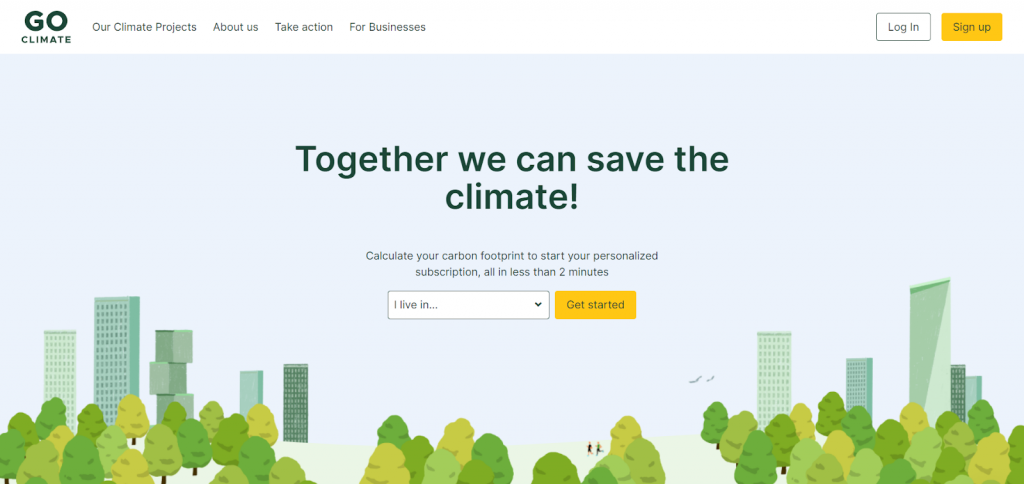
GoClimate is a social enterprise founded in 2017 with the mission of slowing climate change. They calculate your emissions, support you in reducing them, and offer a subscription service for contributing to certified climate projects. Since their inception they have contributed to the avoidance of over 733 thousand tonnes (808 thousand tons) of CO2.
“Together we can save the climate!”
GoClimate
Carbon offset overview: GoClimate provides the option to purchase carbon offset gift cards. They even provide an example as to what the gift card receipt looks like. Purchases currently support a water filter project in Indonesia, a geothermal energy project in Sumatra, and a landfill gas recovery project in Colombia. Previously, GoClimate has supported other renewable energy, cookstoves, and methane recovery projects in Chile, China, India, Aruba, Brazil, Turkey, Bulgaria, and Rwanda.
Carbon offset effectiveness: GoClimate uses the Gold Standard to help ensure transparency and quality in the creation, quantification, and verification of offset projects.
Carbon offset costs: GoClimate offers 4 gift card options that offset either 1, 3, 6, or 12 months of CO2 emissions at a cost of approximately $16.99 per 1,000kg of CO2 offset.
How to get your carbon offsets: Visit their webpage to purchase your gift cards.
Thanks a Ton: Carbon Removal Greeting Cards
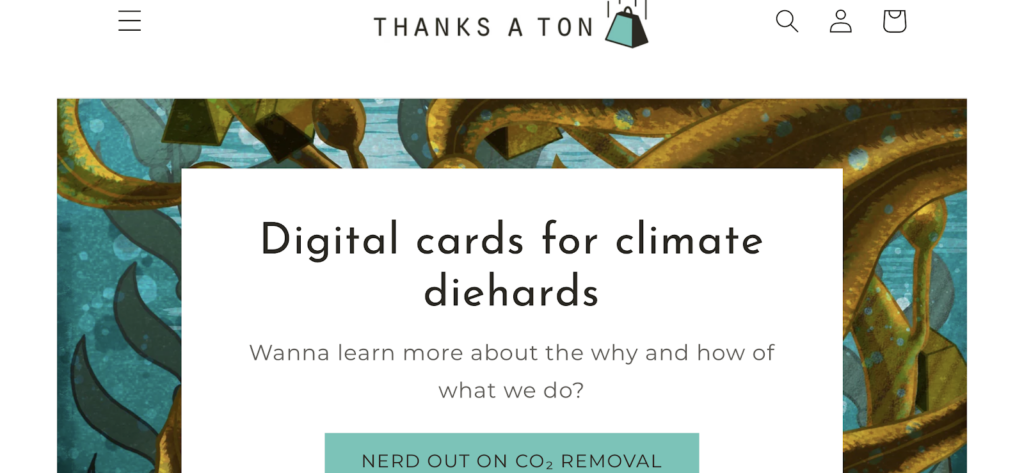
Thanks a Ton was founded in 2021 by Siobhan Montoya Lavender and Laura Katayama to create a more sustainable world. Their mission is to rapidly scale the carbon removal industry by raising awareness.
“Digital cards for climate diehards.”
Thanks a Ton
Carbon offset overview: Thanks a Ton combines carbon removal with custom, digital greeting cards. Each greeting card you send to someone comes with a certificate of carbon removal from one of their vetted partners. Thanks a Ton supports carbon removal projects including: bio-oil, biochar, concrete mineralization, enhanced rock weathering, seaweed sinking, soils, and direct air capture.
Carbon offset effectiveness: Thanks a Ton focuses on carbon removal because it is measurable, durable, and additional. Some of their partners include: Charm Industrial, Nori, Octavia Carbon, and Seaweed Generation, which provide third-party verified carbon credits.
In addition, they have partnered with UNDO, which is included in our list of “Best Carbon Mineralization Offsets”, and both Carbo Culture and Carbonbuilt, which are included in our list of “Best Direct Carbon Capture Offsets”.
Carbon offset costs: Prices range from $25 (soil) to $1,150 (direct carbon capture) per 1,000kg of CO2 removed.
How to get your carbon offsets: You can visit Thanks a Ton’s website to purchase your custom, digital carbon removal greeting cards.
Offset Alliance: High Impact Climate Action
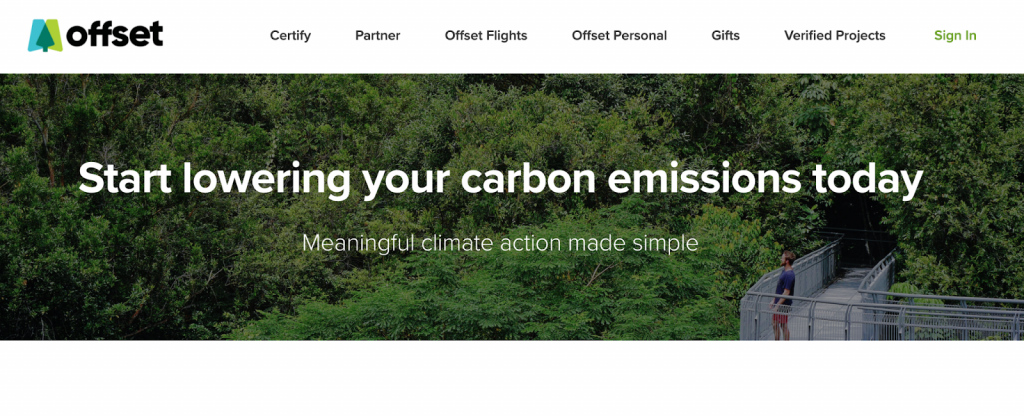
Offset Alliance is a designated Woman Owned Small Business founded in 2019 with the aim of addressing climate change and having a positive impact on local and global communities. Their mission is to make measurable and meaningful climate action simple.
“Meaningful climate action made simple”
Offset Alliance
Carbon offset overview: Offset Alliance offers carbon offset gifts that support two projects, Trees for Bees and Coastal Mangroves. Trees for Bees promotes the revitalization of wildlife corridors in Nicaragua by planting native trees that provide food, shelter, and migration paths for various animals. Coastal Mangroves promotes the revitalization of saltwater ecosystems in Mexico by planting mangrove trees which provide refuge and nursery habitat while acting as a natural buffer against weather events.
Carbon offset effectiveness: Offset Alliance uses the Verified Carbon Standard, Gold Standard, American Carbon Registry, and the Climate Action Reserve to help ensure transparency and quality in the creation, quantification, and verification of offset projects. They are also third-party verified and adhere to the UN’s Sustainable Development Goals.
Carbon offset costs: Trees for Bees offsets either 725, 1,450, or 4,310 kg (0.8, 1.6, or 4.75 tons) of CO2 at a cost of approximately $34.48 per 1,000kg of CO2 offset. This option also plants 3, 6, or 9 native trees, respectively. Coastal Mangroves offsets either 1,497, 2,994, or 6,033 kg (1.65, 3.3, or 6.65 tons) of CO2 at a cost of approximately $16.70 per 1,000kg of CO2 offset. This option also plants 5, 10, or 20 mangrove trees, respectively.
How to get your carbon offsets: Visit their climate action gifts webpage to view both options, Trees for Bees and Coastal Mangroves.
Carbonfund: Go Carbon Neutral
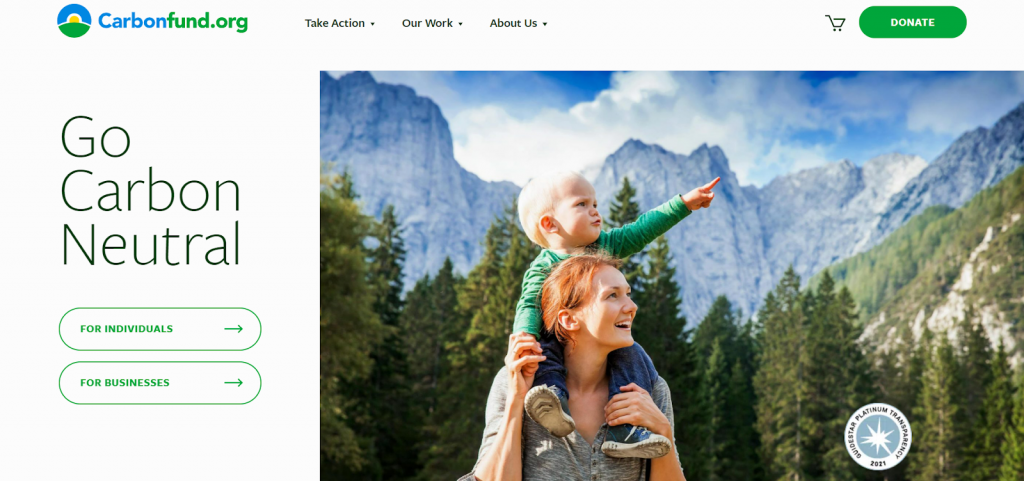
Carbonfund is a nonprofit organization founded in 2003 by current President Eric Carlson and is based in New York, United States of America. Their mission is to make it easy for any individual, business, or organization to reduce & offset their climate impact and hasten the transition to a clean energy future.
“Reduce what you can, offset what you can’t”
Carbonfund
Carbon offset overview: Carbonfund has 2 carbon offset gift options. Purchases support energy efficiency, forestry, and renewable energy carbon offset projects globally. To date, they have supported 240 projects in 28 countries.
Carbon offset effectiveness: Carbonfund projects are third-party verified and adhere to the Verified Carbon Standard, Gold Standard, American Carbon Registry,and Climate Action Reserve to help ensure transparency and quality in the creation, quantification, and verification of offset projects.
Carbon offset costs: Carbonfund offers 2 gift options which offset either 2,000 or 10,000 kg (2.20 or 11.02 tons) of CO2 at a cost of $16.25 per 1,000 kg of CO2 offset.
How to get your carbon offsets: Visit their events/gifts webpage to view and purchase carbon offset gifts.
Zero Smart: Climate Positive

Zero Smart is a United Kingdom based social enterprise that was founded on the questions, “where does our carbon footprint actually come from” and “how much impact are our eco actions actually having”. Their mission is to make it easy for everyday people to support scientific climate solutions and to create systemic change for the good of all humanity.
“Reduce your carbon footprint to ZERO from £6 per month”
Zero Smart
Carbon offset overview: Zero Smart offers a gift option which includes (per adult per year) 13.4 tonnes (13,400 kg) of CO2 removed, 48 trees planted, and a personalized digital certificate of carbon neutrality with the giftee’s name. Purchases support the following projects: mangroves in Madagascar, efficient cookstoves in Eritrea, hydropower in Uganda, reforestation in Papua New Guinea, methane reduction in Denmark, turning rice husks into energy in India, and landfill gas recovery in Chile.
Carbon offset effectiveness: Zero Smart projects adhere to the Verified Carbon Standard and Gold Standard to help ensure transparency and quality in the creation, quantification, and verification of offset projects. They have also partnered with the United Nations Framework Convention on Climate Change (UNFCCC) and Eden Reforestation Projects, which is included in our list of the Best Charities for Planting Trees.
Carbon offset costs: Zero Smart’s carbon offset gift costs approximately $5.97 per 1,000 kg of CO2 offset.
How to get your carbon offsets: Visit the Zero Smart climate positive gifts webpage to view and select your offset gifts.
Wren: Your All-In-One Climate Subscription
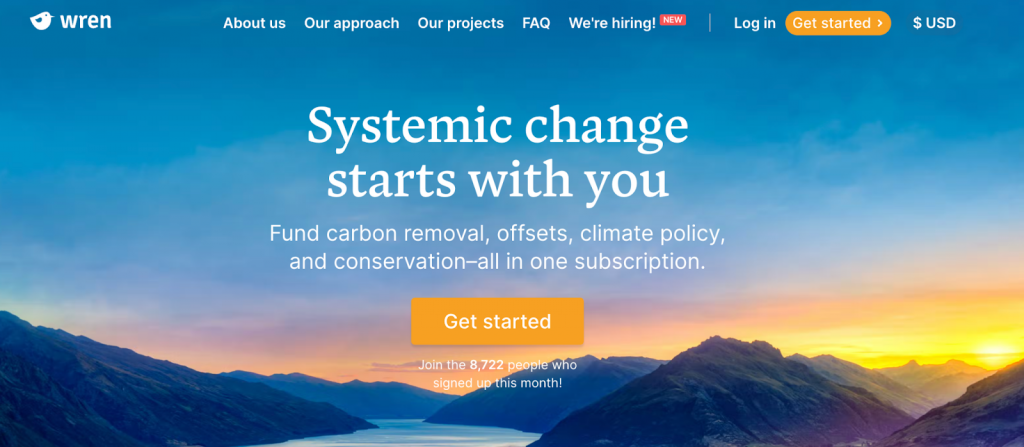
Wren is a climate conscious company formulated to be your on-ramp to climate action. To date they have offset over 160 thousand tons of CO2 in 4 countries.Their mission is to help reverse the climate crisis.
“Climate change is the largest crisis humanity has ever faced. But we can fix it.”
Wren
Carbon offset overview: Wren provides the option to give a climate-positive gift. They first ask you about the recipient’s location, transportation, flight habits, and diet. Based on this information they then calculate 3 different carbon offset gifts. There is also an option to purchase a lifetime gift, which offsets the entire lifetime carbon emissions of a person. Gift purchases support biochar in California, tree planting in Kenya, mineral weathering in Scotland, clean cookstoves in Uganda, and tech-enabled Amazon Rainforest protection projects in Peru.
Carbon offset effectiveness: Wren’s carbon offsets are permanent, additional, only counted once, and based on peer-reviewed science.
Carbon offset costs: Wren offers 3 standard gift options which offset either 1, 3, or 6 months worth of CO2 emissions at a cost of approximately $19.80 per 1,000 kg of CO2 offset. The lifetime gift option also costs approximately $19.80 per 1,000 kg of CO2 offset.
How to get your carbon offsets: Visit their climate-positive gift webpage to enter the recipients information and purchase your offset gifts.
Climate Hero: Becoming Climate Neutral

Climate Hero is a Swedish organization founded in 2018 when their founder, Robert Sabelstrom, calculated his own carbon footprint and realized how large it was. Their mission is to help people reduce their carbon footprint in order to limit global warming to 1.5 degrees Celsius.
“Conscious entrepreneurs trying to do what they can to help tackle the defining issue of our generation”
Climate Hero
Carbon offset overview: Climate Hero offers 4 carbon offset gift card options. Purchases support wind energy in Aruba, solar water heating in India, geothermal energy in Turkey, wind energy in India, and methane digesters in China.
Carbon offset effectiveness: Climate Hero projects are certified by UNFCCC and adhere to the Gold Standard to help ensure transparency and quality in the creation, quantification, and verification of offset projects. They also offset the calculated carbon footprint by a factor of 200% in order to account for potential calculation errors.
Carbon offset costs: Climate Hero offers 4 gift card options which offset either 1, 3, 6, or 12 months of CO2 emissions at a cost of approximately $13.23 per 1,000kg of CO2 offset.
How to get your carbon offsets: Visit their gift card webpage to view and purchase your gift cards.
Selectra: Climate Gift Cards for Businesses
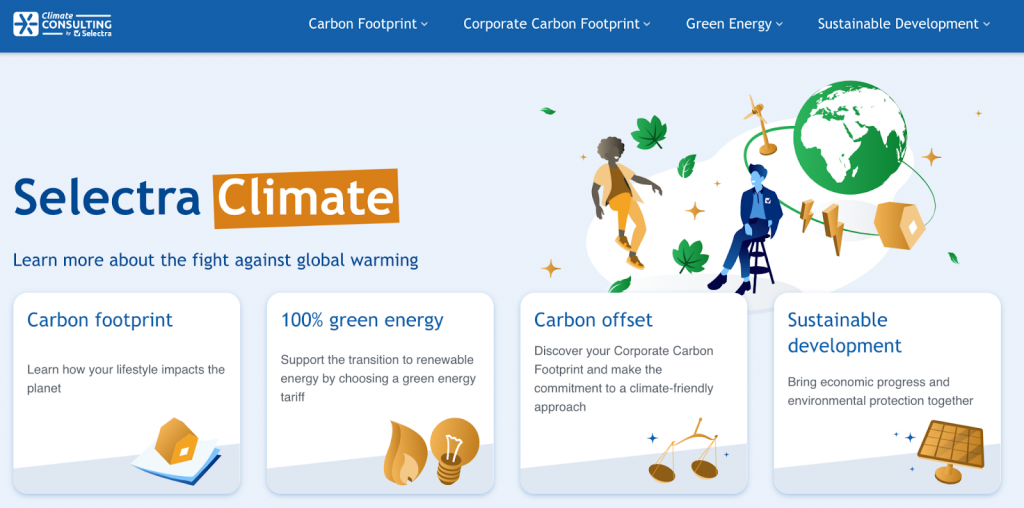
Selectra is a French based company founded in 2007 initially to help consumers save on their energy bills. Their mission is to inform the consumer so they can find the best deals on all their home utility contracts.
“Learn more about the fight against global warming”
Selectra
Carbon offset overview: Selectra offers 4 carbon offset gift card options. You can offset emissions from a trip, consumption habits, transportation, or all CO2 emissions with their plans. Purchases support the Gandhi project, which accelerates the transition to green energy by supporting wind farm development in India. So far, Selectra has invested more than 1905 tonnes (2100 tons) of CO2 in this project.
Carbon offset effectiveness: The Ghandi project was chosen in collaboration with EcoAct, a European consultancy firm specializing in carbon offsetting, and is certified under the Verified Carbon Standard to help ensure transparency and quality in the creation, quantification, and verification of offset projects.
Carbon offset costs: Selectra offers 4 gift card options which offset either 907, 1,814, 4,536, or 9,072 kg (1, 2, 5, or 10 tons) of CO2 emissions at a cost of approximately $11.01 per 1,000kg of CO2 offset.
How to get your carbon offsets: Visit their gift card webpage to view and purchase your gift cards.
How to Choose Carbon Offset Projects Actually Make a Difference
The following information is a summary for you based on our full guide: “How to Buy Carbon Offsets That Actually Make a Difference”
Purchase carbon offset projects with high effectiveness rates. The offset programs in order of most to least effective are:
- Direct CO2 removal: Machines remove CO2 directly from the air. Effective at reducing emissions in the short and long-term because they are additional and permanent.
- Renewable energy: Investing in projects that build and maintain renewable energy sites globally. There is no additionality because renewables are becoming a greater share of our energy mix, with or without the help of offsets.
- Energy efficiency improvements: The creation of products or systems that use less energy than conventional systems to perform the same task. However, if products are replaced too quickly, the amount of CO2 required to produce the new product would exceed the amount of CO2 saved with the new product.
- Carbon sequestration: The long-term storage of carbon via forestry practices. Not an effective way to reduce emissions in the long-term because there is no guaranteed permanence.
If – and only if – they are both additional and permanent, carbon offsets can help reduce your overall GHG emissions to balance off your personal carbon footprint to fight climate change – at least in the short term. But they can be much more effective if they meet certain key criteria and project standards.
Here are key criteria to look for in a carbon offset program:
- A clearly defined protocol that determines which types of projects are eligible and how emission reductions will be measured
- Independent third-party verification of compliance with the protocol
- Registration of offsets in an offset registry, which tracks each credit with a unique serial number to ensure it is only used once
- Transparency in project implementation and reporting
If used correctly, carbon offsets can provide environmental, economic, and social benefits that go beyond reducing carbon emissions. They have the potential to instigate meaningful environmental change and begin to reverse some of the effects of climate change.
Carbon offset project standards assure transparency and quality in the creation, quantification, and verification of offset projects. This way you can ensure that the project is actually reducing CO2 emissions. The following are recognized carbon offset standards:
- Verified Carbon Standard (VCS): Considered the world’s leading voluntary GHG program, with 1700+ projects having removed 630+ million tons of CO2 from the atmosphere. Examples of projects include hydropower in Turkey, forest conservation in Peru, and landfill gas capture in China.
- Gold Standard: A certification that seeks to maximize every dollar of climate and development funding. It has issued 134 million carbon credits from 1700+ projects based in more than 80 different countries. Examples of projects include solar power in India, efficient cooking and heating in China, and wind power in Indonesia.
- Climate Action Reserve (CAR): The premier carbon offset registry for the North American carbon market having issued over 150 million offset credits since its inception in 2001. Examples of projects include landfill gas capture in South Carolina and forest management in California.
- American Carbon Registry (ACR): The first private voluntary GHG registry in the world. Examples of projects include ozone-depleting substances in Arkansas and methane capture from mines in Kentucky.
Choosing carbon offset projects from any of the above project standard registries helps ensure that your project is verified and that it actually reduces CO2 emissions.
What Are the Biggest Carbon Offsetting Limitations
In fact, there are 9 main carbon offsetting limitations that can make the current voluntary carbon market controversial and lead to confusion, inconsistencies, and a general distrust of the system. Have a look at the quick summary table below.
| Carbon Offsetting Limitation | Quick Facts |
| #1: You don’t reduce your own carbon footprint | When you purchase a carbon offset, you are paying someone else to cut their emissions so you don’t have to cut your own emissions. |
| #2: Carbon offsets do not work at the core issue of reducing CO2 emissions | Global warming is still occurring at an accelerated rate because offsetting CO2 emissions does not cut CO2 emissions at the source, it only mitigates emissions. |
| #3: Carbon offsetting only reduces CO2 if the projects are additional and permanent | If carbon offset projects are not additional and permanent, they can make climate change worse because they are not offsetting any carbon. |
| #4: “Poorer” countries are paid to offset carbon while the “rich” countries continue to emit | The richest of the world emit the majority of the world’s carbon. Offsets are just licenses to pollute with the benefit of aiding those in developing countries. |
| #5: Different projects have different effectiveness rates | The varying levels of effectiveness of carbon offset programs make it difficult to choose one that actually reduces emissions. The most effective offset programs are renewable energy programs, followed by energy efficiency improvements, carbon sequestration, and aviation offset programs. |
| #6: CO2 offsets are only realized at the end of project durations | If a carbon offset program is not carried out until the end, then we cannot reap the program’s benefits. For example, planting trees is a common offset program that is only effective if those planted trees are protected during their life span for the carbon benefits to be realized. |
| #7: There are not enough offsets for all CO2 emissions | We emit far more CO2 than we can offset because of carbon sink (e.g., atmosphere, forests, soil, ocean) limitations. |
| #8: Not all offset projects get realized | Of the credits for 1 billion tons of CO2 listed on registries, only about 300-400 million tons of CO2 offsets actually get realized. |
| #9: Carbon offsetting projects are often used as greenwashing | Investing in non-verified credits, not prioritizing in-house emissions reductions, and double-counting carbon credits are methods of greenwashing. Also, companies may advertise a specific program, but it may be just for public attention instead of actually reducing emissions. |
You can check out the full article here: “What Are the Biggest Carbon Offsetting Limitations? (All 9 Explained)”
Why Reducing Your Carbon Footprint Is More Effective Than Offsetting It
The main argument against carbon offsets is that they don’t really reduce overall emissions. Instead of substituting offsetting carbon emissions, we should instead cut the emissions directly at the source. Basically, if we stop emissions from getting into the atmosphere in the first place, we won’t have to worry about offsetting. But have we done this? Have we cut emissions directly at the source? The data says no.
The COVID-19 pandemic triggered the largest decrease in energy-related carbon emissions since World War II, a decrease of 2 billion tons. However, emissions rebounded quickly at the end of 2020, with levels in December ending 60 million tons higher than those in December 2019. This indicates that the earth is still warming at an accelerated rate, and not enough is being done to implement clean energy practices.
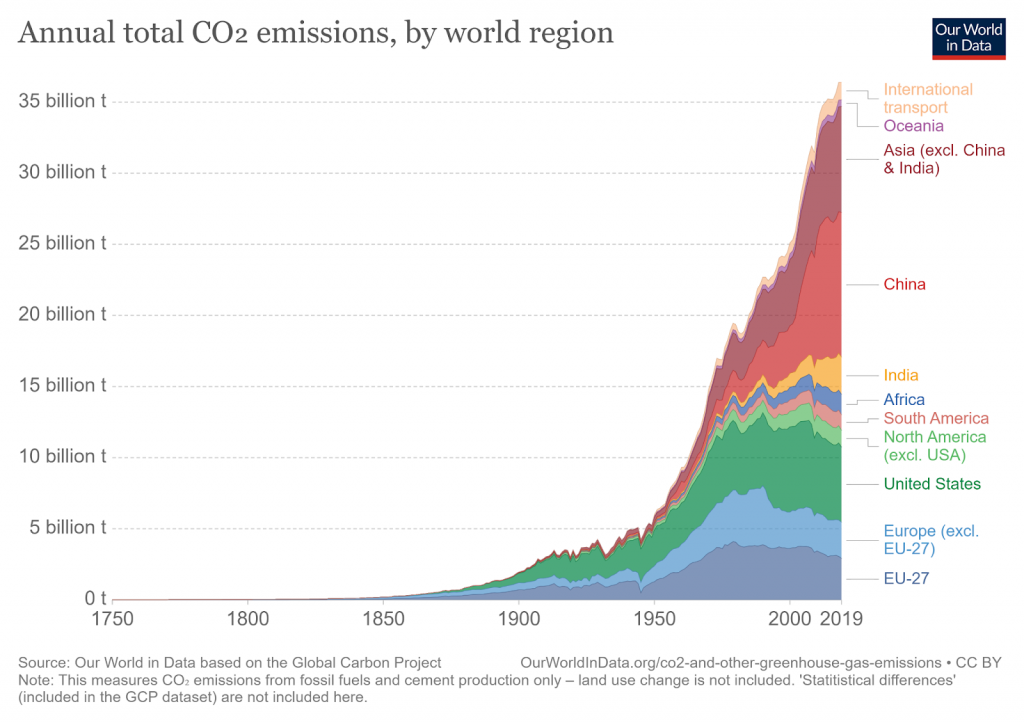
When you buy a carbon offset, you are paying someone else to cut their emissions so you don’t have to cut your own emissions. This is why offsetting alone will not be enough to reduce global carbon emissions.
Carbon offsets are a good place to start if you want to get into the carbon-emission reduction game, but in order to be effective in the long term, we must not rely on them solely. Cutting emissions from the source and then offsetting the remainder is the best way to reduce our carbon footprint and provide the highest environmental benefits. If we fail to cut emissions first, we will fill up our carbon sinks and render them unusable. Preventing carbon emissions rather than reacting once they are already emitted is the best way to reduce overall emissions.
Carbon offsets reduce GHG emissions from coal, oil, and natural gas. Reducing your consumption of these, in turn, reduces your carbon footprint, which has huge impacts on environmental, economic, and public health. A reduced carbon footprint due to lower GHG emissions can mitigate the effects of climate change, improve public health, boost the economy, and maintain plant and animal diversity.
- Climate change: Reducing your carbon footprint plays a role in mitigating the side effects of global climate change. The more we reduce the amount of GHG emissions, the more we slow the rate of temperature rise, sea-level rise, ice melting, and ocean acidification.
- Public health: Reducing GHG emissions lessens the likelihood and severity of extreme weather events, improves air and water quality, maintains biodiversity, and supports a healthy food supply.
- Economics: Reducing GHG boosts the economy, especially when it becomes economically rewarding to innovate solutions that help protect our planet, fight climate change, and are based on clean energy.
- Plant and animal diversity: Protecting biodiversity protects human health because many plants and animals are used in modern medicines
Carbon offsets have the potential to instigate meaningful environmental change, but to make the greatest impact we must understand both their benefits AND drawbacks.
You can find out all about it in our article “Can You Really Offset Your Carbon Footprint? Here Are the Facts”
Final Thoughts
Climeworks, Terrapass, GoClimate, Thanks a Ton, Offset Alliance, Carbonfund, Zero Smart, Wren, Climate Hero, and Selectra have the best carbon offset gift options. They are third-party verified, permanent, additional, use the leading carbon offset standards, and adhere to the UN’s Sustainable Development Goals.
For all of the good that carbon offsets are capable of doing, they still should not be seen or used as a panacea for climate change. When used in conjunction with direct CO2 reduction measures, carbon offsetting can be much more effective in the long-term. We should reduce our own carbon footprint as much as possible first, and only then choose the most effective carbon offset gifts.
Stay impactful,

Sources
- U.S. Environmental Protection Agency: Offsets and RECs -What’s the Difference?
- Britannica: Carbon Offset
- David Suzuki Foundation: Are carbon offsets the answer to climate-altering flights?
- Impactful Ninja: How to Buy Carbon Offsets That Actually Make a Difference (Complete 2022 Guide)
- Climeworks: Homepage
- Climeworks: Direct air capture to help reverse climate change
- Climeworks: Reverse climate change by removing CO2 from the air
- Climeworks: The most sustainable gift
- Climeworks: Customize your removal plan
- Terrapass: Homepage
- Terrapass: About Terrapass
- Verra: Homepage
- American Carbon Registry: Homepage
- Climate Action Reserve: About Us
- Gold Standard: Homepage
- Terrapass: Personal Carbon Offsets
- Terrapass: Holiday Festive Bundle
- Terrapass: The Gift of Terrapass
- GoClimate: Homepage
- GoClimate: About Us
- GoClimate: Gift Cards
- GoClimate: Certificate
- Thanks a Ton: Homepage
- Thanks a Ton: Press Kit
- Thanks a Ton: We’ve got “tons” of options
- Thanks a Ton: Our Carbon Partners
- Charm Industrial: Homepage
- Nori: Homepage
- Octavia Carbon: Homepage
- Seaweed Generation: Homepage
- UNDO: Homepage
- Impactful Ninja: Best Carbon Mineralization Offsets
- Carbo Culture: Homepage
- Carbonbuilt: Homepage
- Impactful Ninja: Best Direct Carbon Capture Offsets
- Thanks a Ton: Enhanced Rock Weathering
- Offset Alliance: Homepage
- Offset Alliance: About Offset Alliance
- Offset Alliance: Climate action gifts
- Offset Alliance: Plant Trees for Bees
- Offset Alliance: Plant Mangroves
- Carbonfund: Homepage
- Carbonfund: About Carbonfund.org
- Carbonfund: Events/Gifts
- Carbonfund: Energy Efficiency
- Carbonfund: Forestry
- Carbonfund: Renewable Energy
- Carbonfund: Carbonfund.org Foundation Project Maps
- Zero Smart: Homepage
- Zero Smart: About Us
- Zero Smart: Our Projects
- Zero Smart: Pet Eco Gifts
- United Nations Framework Convention on Climate Change: Homepage
- Eden Reforestation Projects: Homepage
- Impactful Ninja: 9 Best Charities for Reforestation
- Zero Smart: Carbon Offset Gift
- Wren: Homepage
- Wren: About Us
- Wren: Your Carbon Footprint
- Wren: Gifts
- Wren: Our Projects
- Climate Hero: Homepage
- Climate Hero: FAQ
- Climate Hero: Gift Card
- Climate Hero: Climate Projects
- Selectra: Selectra climate
- Selectra: The Carbon Offset Gift Card for Businesses
- Selectra: Selectra’s Environmental Projects
- EcoAct: Homepage
- Natural Resources Defense Council: Carbon Offsets 101
- Terrapass: Project Standards
- Verra: Verified Carbon Standard
- Verra: Tepekisla Dam & Hydropower Plant Project
- Verra: The Jaguar Amazon Redd+ Project
- Verra: Sanya Landfill Gas Power Generation Project
- Gold Standard: Gold Standard Impact
- Climate Action Reserve: About Us
- Climate Action Reserve: Registry
- Climate Action Reserve: Bluesource – Berkeley County Landfill Gas Project
- Climate Action Reserve: Buckeye Forest Project
- American Carbon Registry: Our Mission
- American Carbon Registry: Registry
- American Carbon Registry: EOS Climate ODS destruction
- American Carbon Registry: Baker Mine AMM
- Impactful Ninja: What Are the Biggest Carbon Offsetting Limitations? (All 9 Explained)
- GreenPeace: The biggest problem with carbon offsetting is that it doesn’t really work
- International Energy Agency: After steep drop in early 2020, global carbon dioxide emissions have rebounded strongly
- Our World in Data: Annual total CO2 emissions
- Impactful Ninja: What Is the Carbon Footprint of Coal Energy? A Life-Cycle Assessment
- Impactful Ninja: What Is the Carbon Footprint of Oil Energy? A Life-Cycle Assessment
- Impactful Ninja: What Is the Carbon Footprint of Natural Gas? A Life-Cycle Assessment
- Impactful Ninja: 4 Main Reasons Why Reducing Your Carbon Footprint Is Important
- National Wildlife Federation: Climate Change
- National Institute of Environmental Health Sciences: Health Impacts of Climate
- Carbon Tax Center: What’s a Carbon Tax?
- World Health Organization: Biodiversity and Health
- Impactful Ninja: Can You Really Offset Your Carbon Footprint? Here Are the Facts

